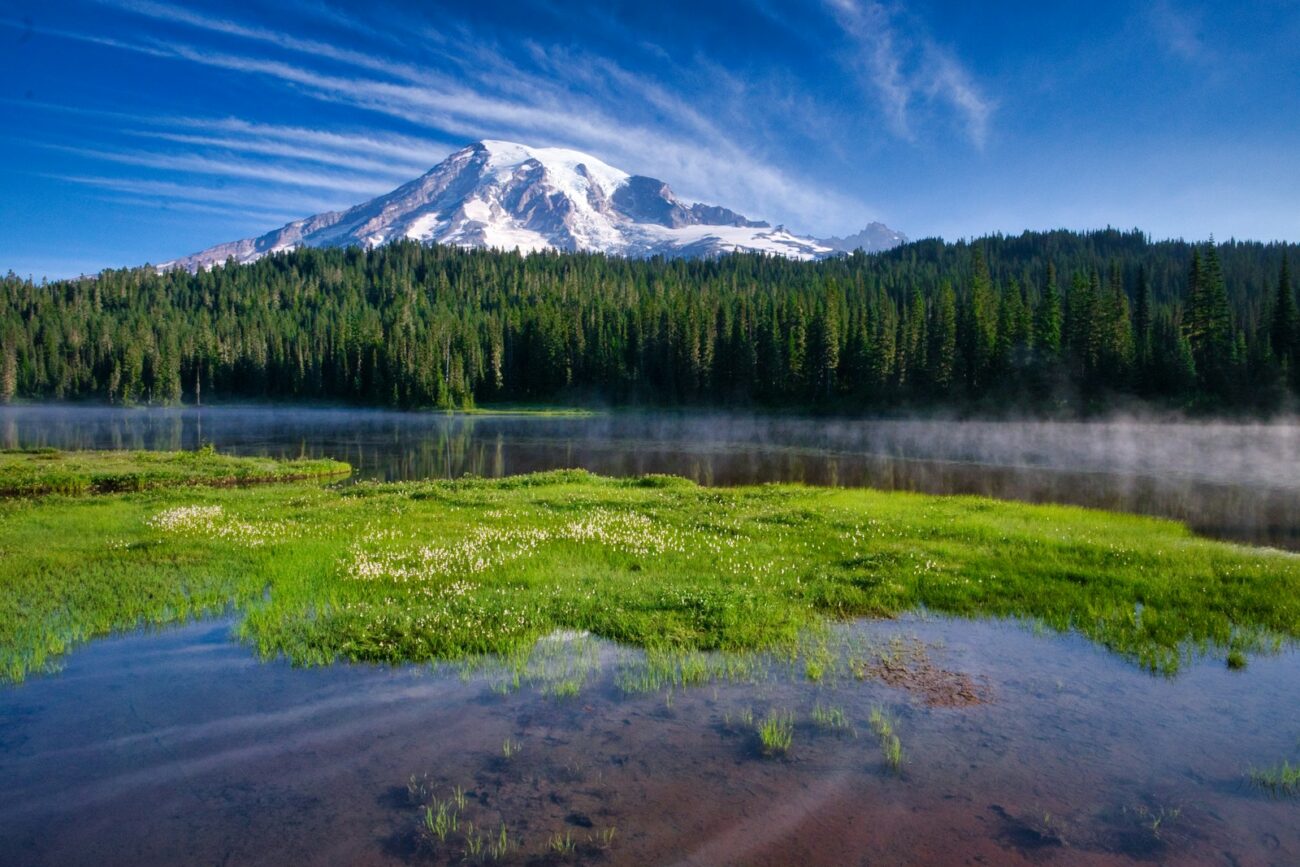Winter transforms America’s national parks into enchanted wonderlands where fewer crowds, snow-draped landscapes, and unique wildlife viewing opportunities await the adventurous traveler. While many visitors flock to these natural treasures during summer months, the winter season reveals their hidden magic—frozen waterfalls, steam rising from geothermal features against snowy backdrops, and serene solitude that’s impossible to find during peak tourist seasons. From cross-country skiing through pristine forests to witnessing rare winter wildlife behaviors, these 13 national parks offer extraordinary experiences for those willing to brave the colder temperatures.
Yellowstone National Park, Wyoming/Montana/Idaho

Yellowstone’s winter transformation is nothing short of spectacular, with its famous geothermal features creating an otherworldly contrast against the snow-covered landscape. Steaming geysers, including the reliable Old Faithful, erupt dramatically into frigid air, while thermal pools appear more vibrantly colored against the white backdrop. Wildlife viewing becomes a more intimate experience as bison, wolves, and elk are easier to spot against the snow, particularly in the Lamar Valley, often called “America’s Serengeti.” Access to most of the park is limited to snowmobiles and snow coaches during winter months, creating a peaceful experience far removed from summer’s crowds and traffic. The park offers guided tours and unique overnight experiences at the Snow Lodge, allowing visitors to witness the quiet majesty of America’s first national park in its most serene season.
Grand Teton National Park, Wyoming
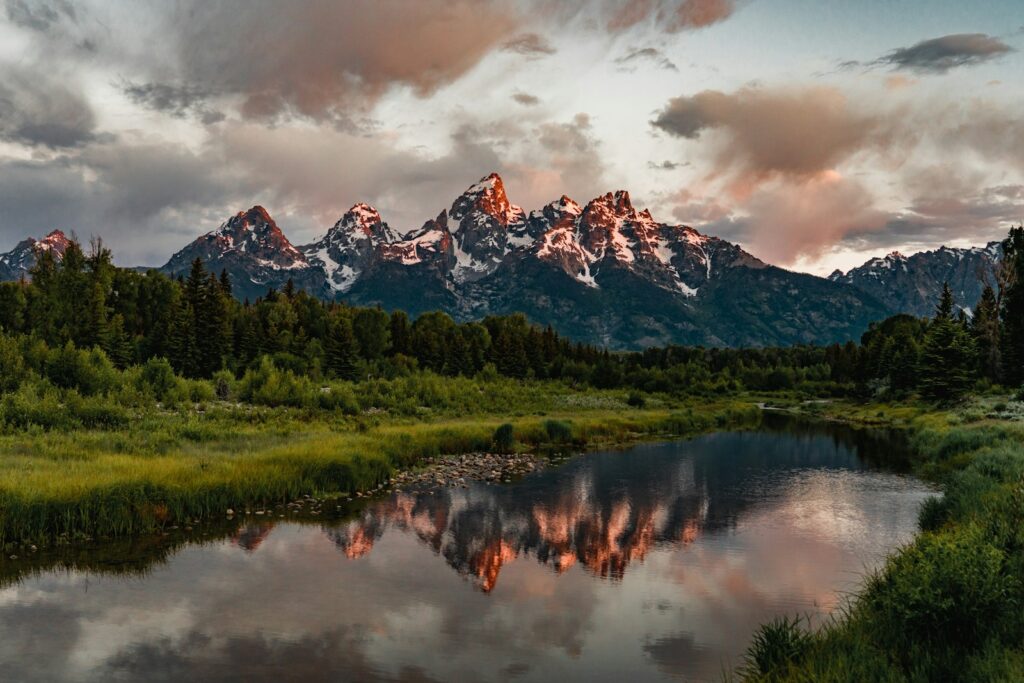
Winter drapes the jagged Teton Range in a pristine white blanket, creating a photographer’s paradise of dramatic mountain vistas that reflect perfectly in partially frozen lakes. The park becomes a premier destination for cross-country skiing and snowshoeing, with over 14 miles of groomed trails offering varying difficulty levels for winter sports enthusiasts. Wildlife viewing opportunities abound as moose, elk, and bison congregate in the lowlands, making them easier to spot against the snow-covered landscape. The Moose-Wilson Road and Antelope Flats areas are particularly good for spotting these magnificent creatures going about their winter routines. For those seeking a unique perspective, guided winter wildlife tours provide expert knowledge and the chance to observe these animals in their natural winter habitat, including the possibility of spotting elusive predators like wolves and foxes hunting in the snow.
Bryce Canyon National Park, Utah

Bryce Canyon’s famous hoodoos—those distinctive spire-shaped rock formations—take on an entirely new character when dusted with snow, creating a striking contrast between the orange-red rock and brilliant white powder. The park offers ranger-guided snowshoe hikes that provide both education about winter ecology and breathtaking views without the summer crowds that typically fill the viewpoints. Winter brings remarkably clear air to Bryce Canyon, making it an ideal time for stargazing, with visibility often extending beyond 100 miles during daylight hours and revealing countless stars after dark. The park’s location at a high elevation means winter temperatures can be extreme, but these conditions create spectacular ice formations and frost-covered trees that transform the landscape into something that resembles an alien world. Sunset and sunrise views become even more dramatic in winter as the low sun angle intensifies the red-orange glow of the hoodoos against the snow-white background.
Rocky Mountain National Park, Colorado

Rocky Mountain National Park’s winter landscape offers a peaceful alternative to its bustling summer season, with snow-capped peaks creating a dramatic alpine backdrop for winter adventures. The park maintains several trails that are excellent for snowshoeing and cross-country skiing, including the popular Bear Lake area, where frozen lakes sit beneath towering mountain peaks. Wildlife viewing takes on a special quality in winter as elk herds descend to lower elevations, often visible from many park roads and overlooks. The park’s west side typically receives more snow and fewer visitors, making it an excellent choice for those seeking solitude among pristine winter scenery. For experienced winter mountaineers, the park offers challenging terrain and the opportunity to summit peaks with spectacular panoramic views of snow-covered wilderness extending as far as the eye can see.
Acadia National Park, Maine
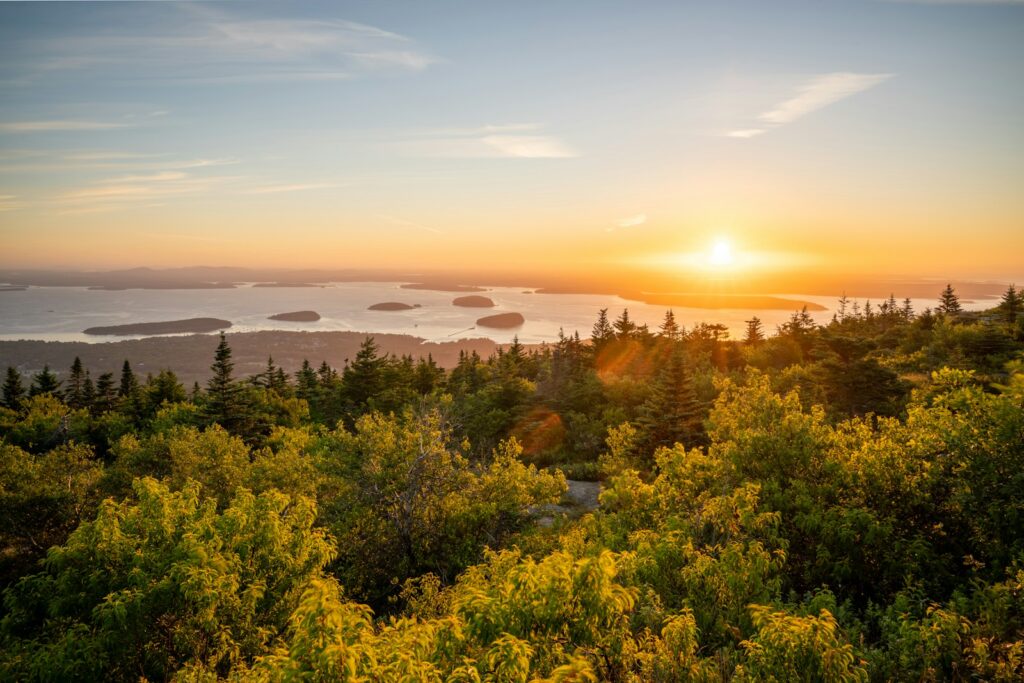
Acadia transforms into a coastal winter wonderland where snow-covered granite peaks meet the icy Atlantic Ocean, creating a dramatic landscape unlike any other national park. The park’s carriage roads—47 miles of rustic broken-stone roads—become ideal for cross-country skiing and snowshoeing through forests and past frozen ponds. Winter brings the opportunity to witness the first sunrise in the United States from Cadillac Mountain, with the added magic of snow-covered landscapes and the possibility of seeing sea smoke rising from the Atlantic on particularly cold mornings. The park’s proximity to Bar Harbor provides convenient access to accommodations and dining options even during the off-season, making it a more accessible winter destination than many western parks. Wildlife enthusiasts can spot winter residents like red foxes, snowshoe hares, and various bird species that have adapted to the harsh Maine winters, offering a glimpse into the remarkable resilience of nature.
Yosemite National Park, California
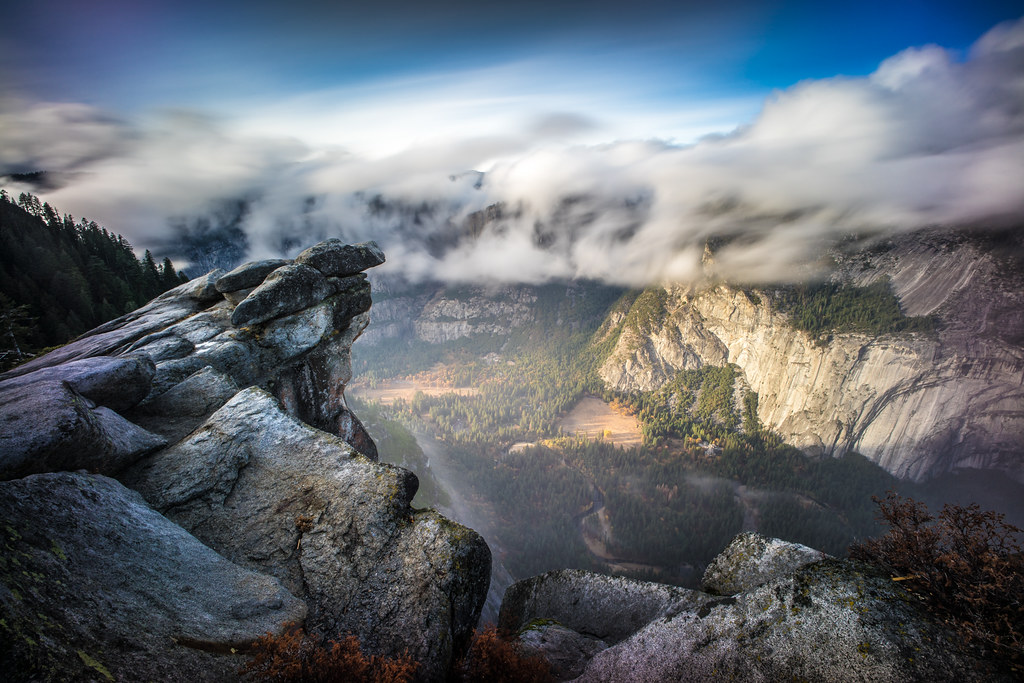
Yosemite Valley draped in winter white presents one of America’s most iconic landscapes in its most serene state, with El Capitan and Half Dome standing majestically against snow-covered meadows and forests. The park’s famous waterfalls take on magical qualities in winter, with Yosemite Falls often creating a “snow cone” at its base and Horsetail Fall potentially displaying the renowned “firefall” effect in February when sunset light hits it just right. Winter sports enthusiasts flock to Badger Pass Ski Area, California’s oldest downhill skiing destination, which offers alpine skiing, snowboarding, and access to cross-country ski trails that wind through pristine forest landscapes. The valley floor remains accessible by car throughout most winter days, making Yosemite one of the more convenient national parks to visit during the colder months, though chains are often required. Glacier Point Road, closed to vehicles in winter, becomes a stunning 10.5-mile cross-country ski route leading to breathtaking views of snow-covered High Sierra peaks and the valley below.
Grand Canyon National Park, Arizona

The Grand Canyon’s winter transformation brings a peaceful solitude and visual drama that summer visitors rarely experience, with occasional snow dusting the canyon’s multi-colored layers and creating breathtaking contrasts. The South Rim remains open year-round and sees dramatically fewer visitors during winter months, allowing for a more intimate experience of this natural wonder without the crowds that typically gather at popular viewpoints. Clear winter air improves visibility across the canyon’s vast expanse, often providing views that extend more than 100 miles and revealing details of the North Rim that summer haze frequently obscures. Wildlife viewing opportunities improve as animals like elk, mule deer, and California condors become more visible against the snow-dusted landscape. For adventurous travelers, winter hiking into the canyon offers mild temperatures at lower elevations, though the rim can be quite cold and icy trails demand proper equipment and experience.
Olympic National Park, Washington
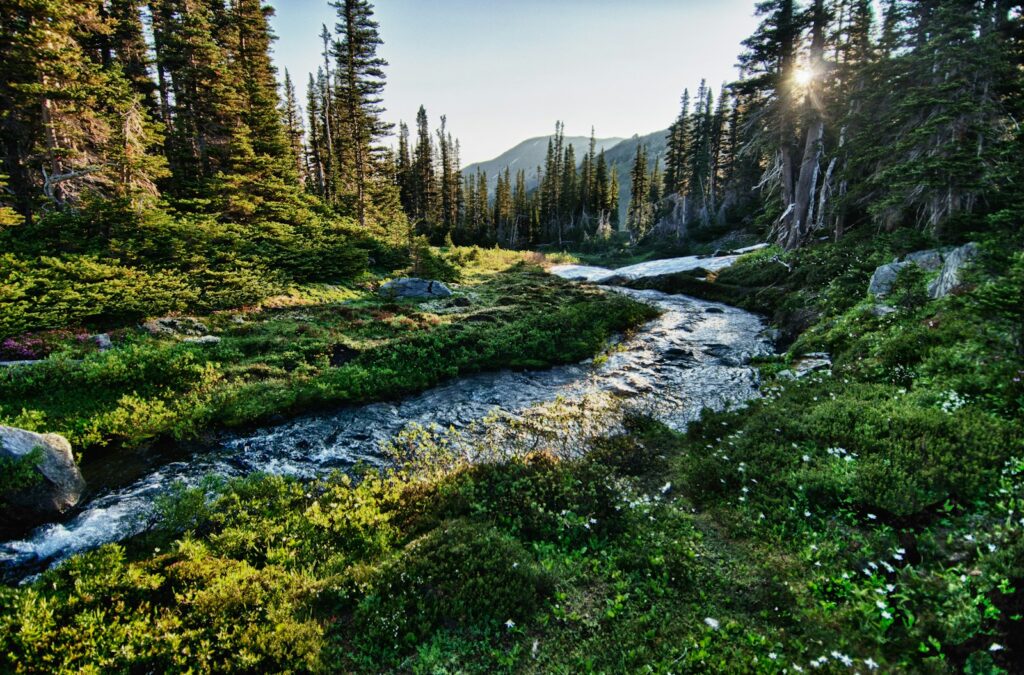
Olympic National Park’s diverse ecosystems create strikingly different winter experiences within a single park, from snow-covered mountains to temperate rainforests receiving their peak rainfall. Hurricane Ridge becomes a winter sports paradise with downhill skiing, snowboarding, snowshoeing, and sledding opportunities just 17 miles from Port Angeles, offering spectacular views of the Olympic Mountains and sometimes even the Strait of Juan de Fuca. The park’s famous temperate rainforests, including the Hoh and Quinault, reach their most lush and verdant state during winter months, when heavy rainfall intensifies the emerald mosses and creates magical scenes of mist drifting through ancient trees. Coastal areas of the park offer dramatic storm watching opportunities as powerful winter systems roll in from the Pacific, creating massive waves that crash against sea stacks and rugged shorelines. Winter brings a better chance of spotting Roosevelt elk in the lowland forests and meadows as they descend from higher elevations, providing wildlife viewing opportunities even on rainy days.
Zion National Park, Utah
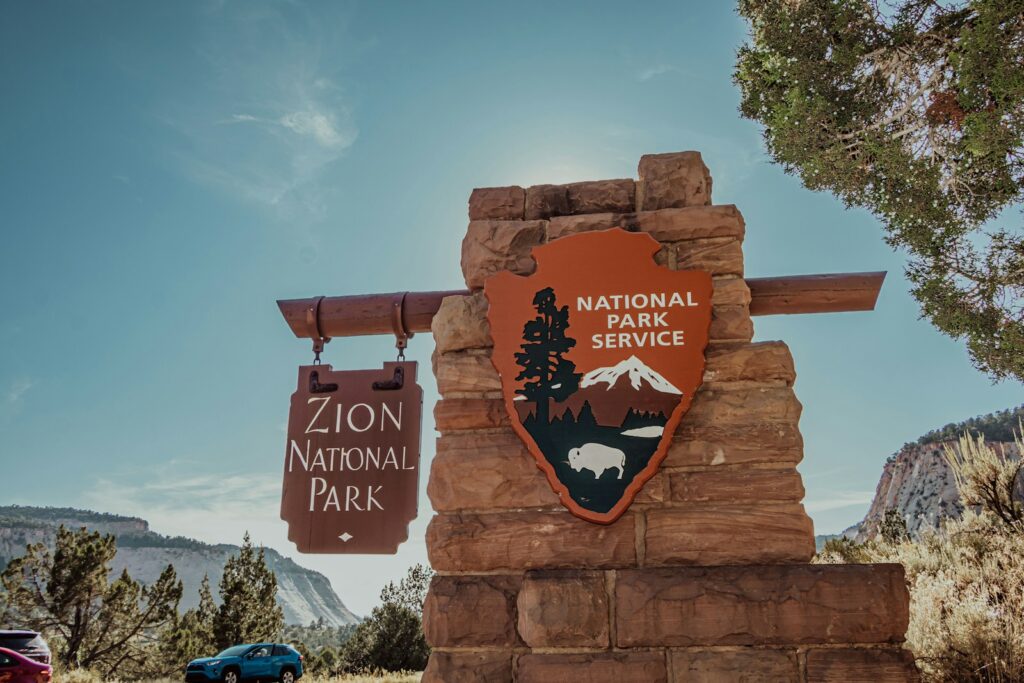
Zion’s towering red rock formations take on a magical quality when dusted with snow, creating a striking contrast that photographers chase year after year. The park’s famous trails, including Angels Landing and portions of The Narrows, remain accessible during many winter days, offering a completely different experience without the intense heat and crowds of summer months. Wildlife viewing improves as animals become more active during daylight hours in the cooler temperatures, with mule deer, wild turkeys, and various bird species frequently spotted near the Virgin River. Winter storms occasionally transform the park’s numerous waterfalls, creating ephemeral cascades that pour down red rock walls where dry streaks exist during other seasons. The park’s location at a lower elevation than many other Utah parks means winter temperatures are often mild during daylight hours, making it an excellent choice for comfortable winter hiking when other parks might be too cold or snow-covered.
Glacier National Park, Montana

Glacier National Park transforms into a pristine winter wilderness where solitude and untouched snow-covered landscapes create an experience that feels worlds away from the park’s busy summer season. While the famous Going-to-the-Sun Road closes to vehicles, its lower portions become groomed routes for cross-country skiing and snowshoeing through spectacular mountain scenery. The park’s western valleys, including Lake McDonald, remain accessible year-round and offer winter activities with the dramatic backdrop of snow-covered peaks reflecting in partially frozen waters. Wildlife tracking becomes a fascinating winter activity as animal prints in fresh snow tell stories of mountain lions, lynx, wolverines, and other elusive creatures that are rarely seen but leave their marks in the winter landscape. Apgar Village serves as a winter hub with visitor information and access to trails, though services are limited compared to summer months, creating an experience of self-reliance and wilderness immersion that many winter enthusiasts specifically seek.
Death Valley National Park, California/Nevada
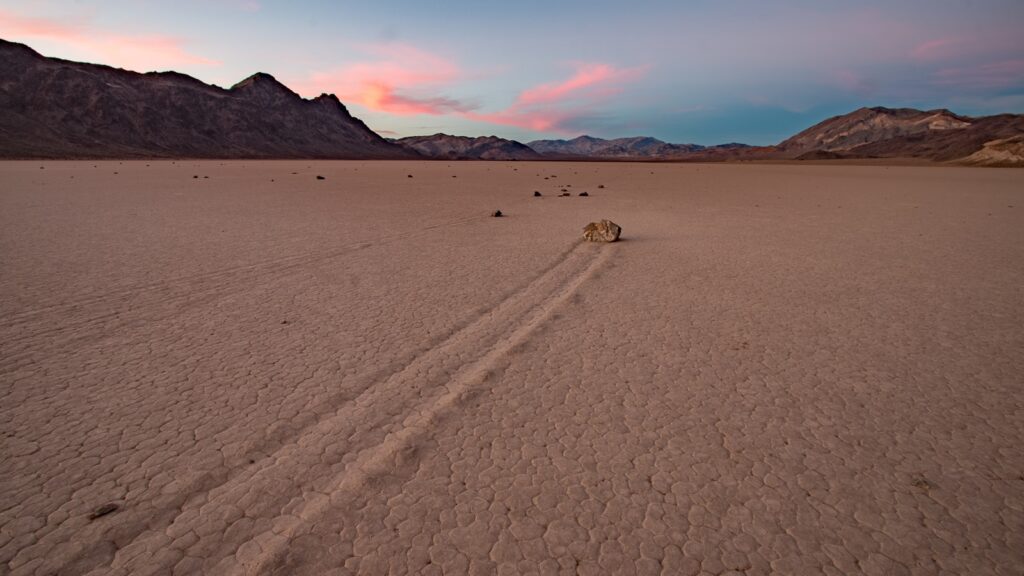
Death Valley offers a perfect winter escape with comfortable daytime temperatures typically ranging from 60-70°F, ideal for exploring a landscape that becomes dangerously hot during summer months. The park’s higher elevations, including Telescope Peak, occasionally receive snow, creating the surreal sight of snow-capped mountains rising above one of the hottest places on Earth. Winter’s clear air quality enhances visibility across the vast desert expanses, bringing distant mountains into sharp focus and creating ideal conditions for both photography and stargazing in one of the country’s premier Dark Sky Parks. Rare winter rainstorms can transform the park temporarily, filling normally dry lakebeds, triggering desert plant growth, and occasionally creating the conditions for spring wildflower blooms. Popular sites like Badwater Basin, Artist’s Palette, and Mesquite Flat Sand Dunes become much more enjoyable to explore without the extreme heat that defines the park for most of the year.
Everglades National Park, Florida
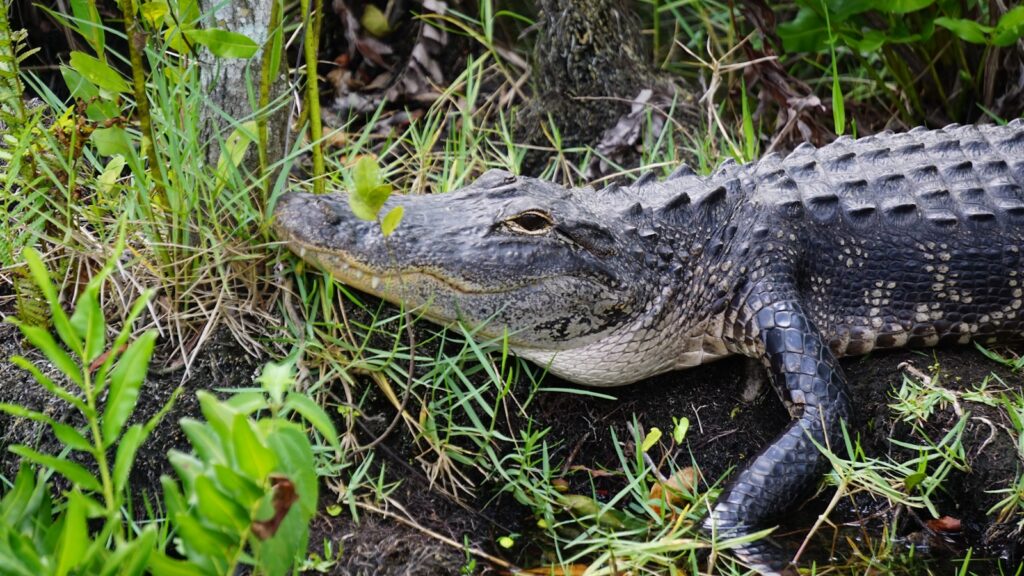
Winter brings the Everglades’ dry season, creating ideal conditions for wildlife viewing as animals concentrate around remaining water sources, making this the perfect time to spot alligators, wading birds, and perhaps even the elusive Florida panther. Comfortable temperatures and significantly reduced insect populations make winter the best time for hiking, canoeing, and kayaking through the park’s diverse ecosystems without the sweltering heat and mosquito swarms of summer months. Birdwatching reaches its peak during winter as migratory species join the resident birds, creating spectacular congregations, particularly at sites like Anhinga Trail and Eco Pond where hundreds of birds may gather at dawn and dusk. Ranger-led programs increase during this high season, offering visitors expert guidance through activities like slough slogs, canoe trips, and stargazing events in this unique subtropical wilderness. The park’s Flamingo and Gulf Coast areas become particularly active with wildlife during winter months, offering excellent opportunities to observe American crocodiles, manatees, and dolphins in their natural habitats.
Mount Rainier National Park, Washington
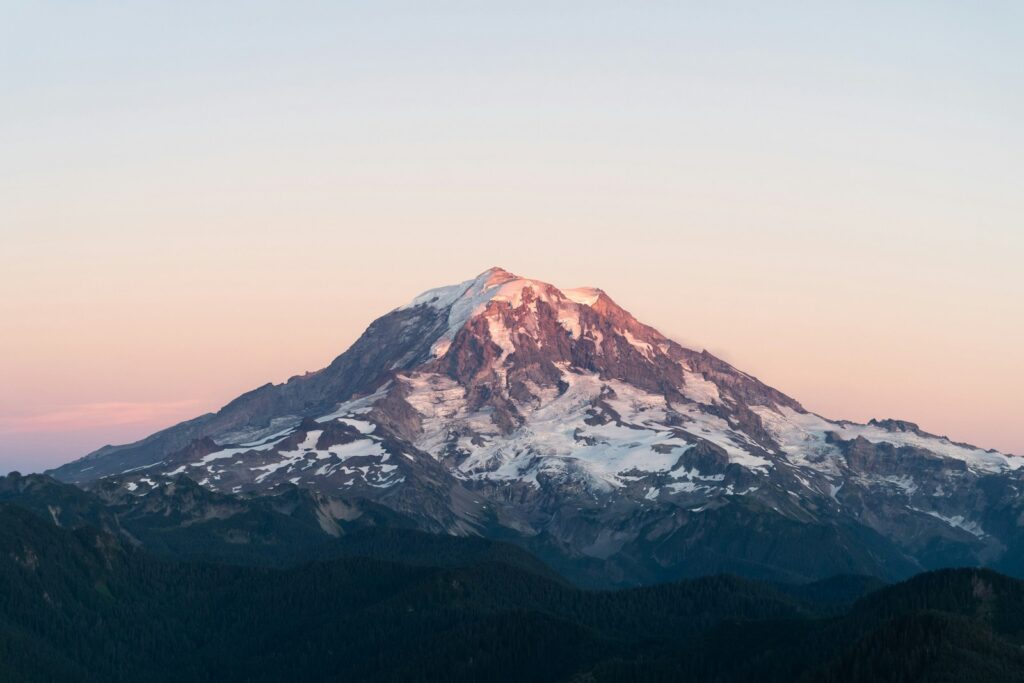
Mount Rainier receives abundant snowfall that transforms the landscape into a winter playground, with Paradise area often recording some of the highest snowfall totals in the country, creating a deep winter wonderland that typically lasts from November through May. The park offers dedicated snowplay areas, snowshoeing trails, and cross-country skiing opportunities that provide access to spectacular alpine vistas without requiring technical mountaineering skills. Wildlife tracking becomes a fascinating activity as the prints of foxes, snowshoe hares, and other animals tell stories in the fresh snow, while lucky visitors might spot resident species like elk, mountain goats, or even bobcats against the white background. Winter photography opportunities abound as the mountain’s massive volcanic cone, draped in snow and ice, creates a dramatic centerpiece for landscapes that include frost-covered trees, frozen waterfalls, and snow-filled valleys. The historic Paradise Inn closes for winter, but the Henry M. Jackson Memorial Visitor Center opens on weekends and holidays, providing a warm refuge, information, and facilities for winter visitors exploring this iconic Washington landmark.
Winter reveals a hidden side of America’s national parks that many visitors never experience. These 13 destinations demonstrate that the colder months often provide the most magical park experiences—whether through enhanced wildlife viewing, dramatic snow-covered landscapes, or the simple joy of having these natural treasures largely to yourself. While winter visits require additional preparation, appropriate gear, and awareness of changing conditions, the rewards are immeasurable. From the geothermal wonders of Yellowstone to the sunny desert escapes of Death Valley, winter transforms these protected landscapes into their most authentic and often most beautiful versions, waiting for those adventurous enough to discover their seasonal magic.

